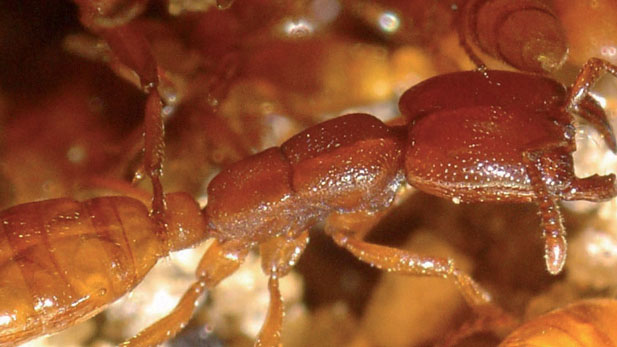
In western culture, insects tend to be viewed as pests. There are exceptions, of course—bees who make our honey and ladybirds who keep our gardens aphid-free—but for the most part, minibeasts like flies, wasps and ants are seen as unwanted guests in our otherwise pristine human-centric environments.
Not all cultures around the world are so dismissive of these tiny and abundant animals. In Cameroon’s Far North, the Mofu people have developed a detailed lore about the insects that live among them in the Mandara Mountains.
In this remote and unforgiving part of the world, insects are among the only animals around. The Mofu have adapted to this by eating insects as food, using them in their medicine and agriculture, and even treating the behaviours of some species as important omens.
Social insects such as ants are particularly embraced by the Mofu, seen as symbolic of kinship and social relations. A type of driver ant from the Dorylus genus is the most prized insect of all: Mofu people refer to this ant as the jaglavak.
Jaglavaks are highly respected for their fearless assaults on termites and other insects. These relentless bugs live in large, hidden underground communities. They are organised and efficient in their attacks, and therefore viewed with particular admiration by the Mofu people.
The jaglavak seems to avoid attacking other ‘organised’ insects, such as mananeh termites and gulah ants. According to Mofu lore, the coexistent relationship between these insects mirrors the power relations between people. For example, a type of red ant known as singel gagazana is viewed by the Mofu as the jaglavak’s ‘intimate friend’, a sort-of deputy that stands as the head of the insect family in sacrifice rituals.
A variety of complex relationships between different insect species are etched into Mofu lore, but at the top of the hierarchy always sits the irrepressible jaglavak. This almighty ant is viewed as a prince, with Mofu chiefs closely following the animals’ movements and behaviours to look out for omens. Conflicts between jaglavaks and rival insects such as the ndroa ant are interpreted as symbolic of future clashes between human groups.

Even the Mofu’s ancestral history is paralleled in their interpretation of the jaglavak. The insect is viewed as being equivalent to the Movo people—feared and respected clans who once dominated the areas in which the Mofu now live. Due to an alliance between Mofu people and the fierce Movo warriors, jaglavaks are similarly seen as allies.
Whenever a Mofu compound is infested with ants or termites, jaglavak soldiers are relied on to flush the enemy insects out. Hundreds of the insects are collected and ceremonially brought into the compound, all while being solemnly saluted by the human inhabitants.
The head of the family declares that the jaglavaks are ‘distinguished guests’ before respectfully asking the collected insects to chase out the intruders. Jaglavaks are also requested not to harm the people or domestic animals who live in the compound—it is feared that the insects could use their violent power to kill humans by crawling into their nostrils.
This ritual seems to work: the Mofu claim that the invading insects vanish two to three weeks after being exposed to the jaglavaks. The prince of insects doesn’t hang around either—once the jaglavaks’ job is done, they disappear until they are next required.
Could the Mofu’s fascinating dependence on the jaglavak inspire other parts of the world to treat ants and other insects with respect? It seems unlikely, but perhaps by sharing stories like this one we can encourage future generations to look after creatures of the six-legged kind.
[geoip-content not_country=”CA”]To learn more about the amazing jaglavak, check out Jaglavak, Prince of Insects, a documentary available via the Love Nature app [/geoip-content]
